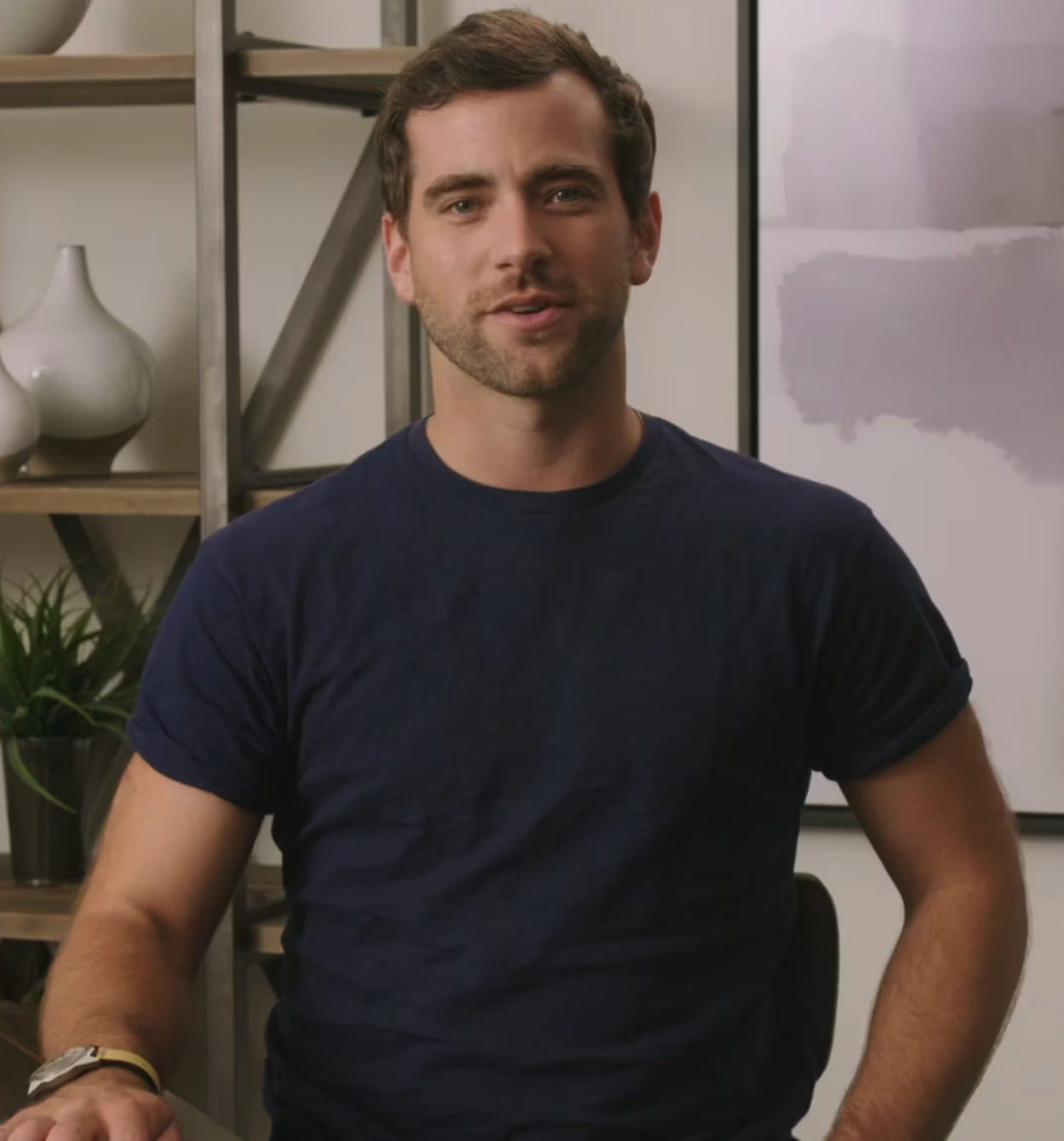Your All-In-One Video Advertising and Distribution Guide
Getting Started
You know you need video, and maybe you’ve even hired a professional video production company to assist you, but having video isn’t going to do much for you if the right people aren’t seeing it.
That’s where video advertising and distribution comes in!
By now, you’ve hopefully got a video in your hands that you absolutely love. If you don’t, you might be in the video strategy and planning stage, where you’re figuring out exactly how to get the most bang for your buck when it comes to creating your video.
Either way – welcome! You’re in the right place.
Getting a good handle on your advertising and distribution strategy is essential to meeting your video success goals and, ultimately, getting your brand in front of the right people at the right time.
And it all starts with the right balance of owned, paid, and earned media.
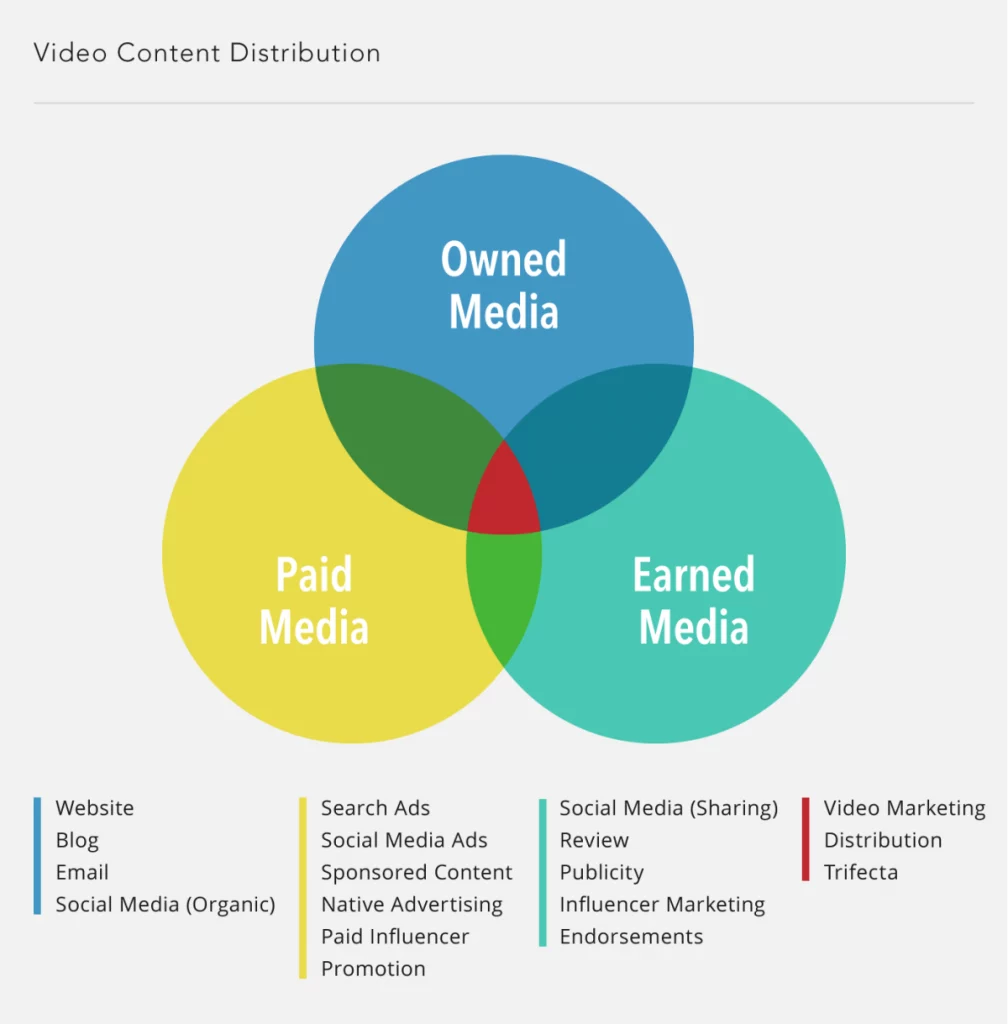
That’s why today, we’re breaking down exactly how to approach your distribution strategy and giving you some of our tips and best practices so you can get started on the right foot.
Keep reading or use the navigation links to learn more.
Paid Advertising
When you think of paid video distribution, you might think of TV commercials or otherwise expensive-to-create content, but video ads can be so much more than that. From a sponsored post on Facebook to a search ad on Google Display Network, your options are almost unlimited when it comes to promoting your video content across the web.
Can your video be successful without an investment in paid ads?
It’s possible, but highly unlikely. Even major, already well-established companies have to put money behind their video ads if they want them to be seen. Whether you’ve got an amazing product video introducing your latest innovation, or an immersive, interactive video ad with 3D elements, you’ll want to back your ad with at least a few dollars of daily spend in order to measure your video’s effectiveness and help accomplish your brand goals.
Let’s take a look at just a few of the places you can run paid ads and how to get started.
Search Ads
Search ads are a highly underutilized tool in the video marketing world. Because they’re not video-enabled (yet), most companies don’t think about incorporating search ads in their paid distribution strategy. But that’s a huge mistake!
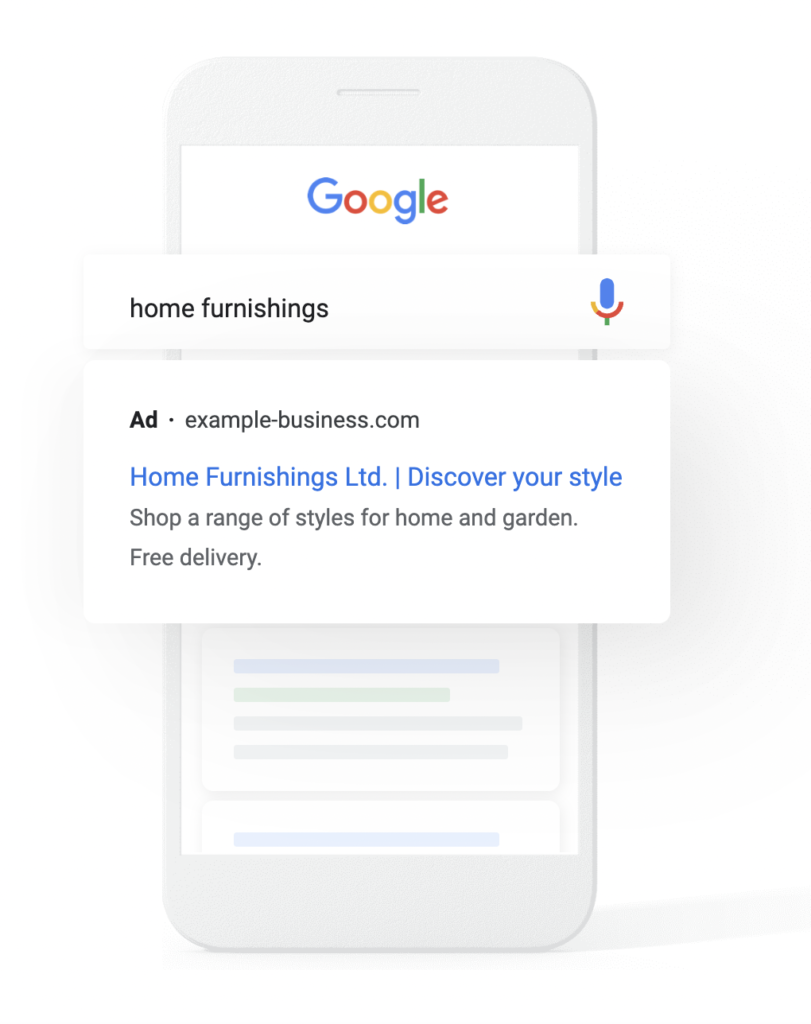
Search ads on Google, Yahoo, and Bing are some of the lowest-cost advertising you can find. Though you can’t run video ads directly on the platforms, you can run text ads that lead to your video’s landing page. That means you can spread your video’s reach for a fraction of the cost of running ads on other platforms. The highly customizable and very specific keyword targeting also means your visitors will land on your page with high intent and in a more purchase-ready state of mind.
YouTube Ads
YouTube is more than a hosting service, it’s also the second-largest search engine and one of the biggest video advertising networks in the world.
This makes sense when you think about it. Over 40% of global shoppers say they have purchased products they discovered on YouTube and they offer a number of different ad units you can choose from that perfectly align with any video goal you might have. Following a few best practices on YouTube, you can pick the right ad unit for your campaign and reach your audience at the right time.

For example, if your goal is driving brand awareness, a TrueView Reach ad might be right for you. If you want to engage audiences that aren’t yet convinced to buy, a TrueView Discovery ad might be the way to go. If you’re trying to give users that final push they need to take action, TrueView Action ads can drive traffic directly to your website.
There are other types of ads available on YouTube, like six-second Bumper ads that play before, during, or after videos, Masthead ads that allow a brand to take over the YouTube homepage for 24 hours, and more.
Wondering how to create a YouTube ad? Check out our step-by-step guide!
TikTok Ads
With over 1 billion monthly active users, TikTok has become a go-to platform for advertisers looking to reach a younger, mobile-first audience with short-form video. As a relatively new platform, TikTok offers unique opportunities for advertisers to reach users in engaging and creative ways.
One of the key advantages of advertising on TikTok is the platform’s wide range of video ad formats. TikTok offers several different types of video ads, each with its own set of features and capabilities. Some of the most popular formats include:
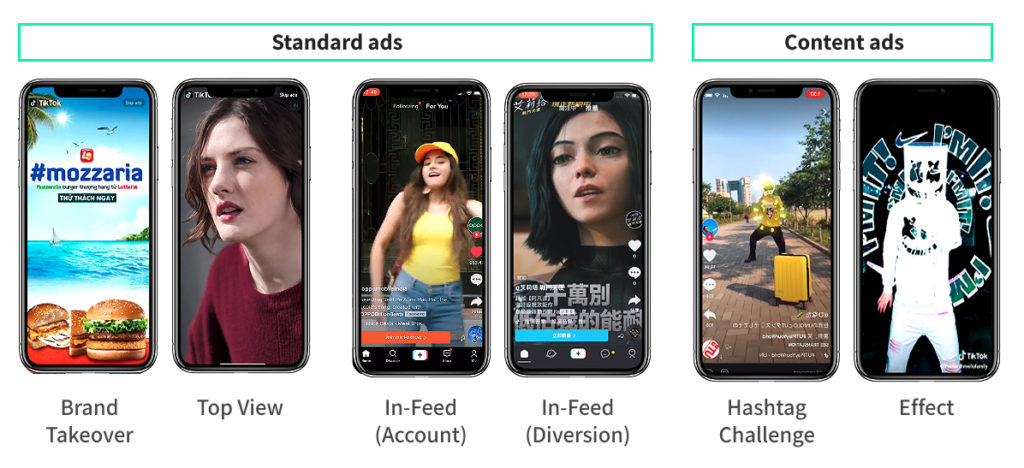
- In-feed video Ads: These ads are shown in the main feed of the app, and are designed to blend seamlessly with the user experience. They can be up to 60 seconds long, and can include calls to action, links, and hashtags.
- Brand Takeover Ads: These ads are shown when a user opens the app and are designed to grab the user’s attention. They can include a combination of video, images, and text, and are 3-5 seconds in length.
- Topview Ads: TopView ads are full-screen, vertical videos that can be up to 60 seconds long and appear as the first video that users see when they open the app. One of the key differences between TopView ads and Brand Takeover ads is the placement of the ad. TopView Ads are the first in-feed post after 3 seconds whereas Brand Takeover ads are shown when a user opens the app.
- Branded Hashtag Challenge Ads: These ads allow brands to create and sponsor a challenge on the platform, encouraging users to create their own videos using a specific hashtag. This format is a great way to build brand awareness and drive engagement.
- Branded Effects Ads: These ads allow brands to create interactive 3D lenses that users can apply to their own videos. This format is a great way to promote products or services in a fun and engaging way.
Another advantage of advertising on TikTok is the platform’s sophisticated targeting capabilities. TikTok allows advertisers to target users based on a wide range of criteria, including demographics, interests, behaviors, and more. This allows brands to reach the right audience with the right message at the right time.
Facebook Ads
Like YouTube, Facebook has tons of different types of video ads you can use to promote your brand video. And with a total audience of over two billion people and all their demographic data in one place, advertising here is almost required if you want to reach your target audience.

Facebook offers In-Feed video ads that users see natively as they scroll their Newsfeed and In-Stream video ads that play during other video content. Both stand out, though In-Feed ads can be a bit easier to ignore if your video isn’t immediately captivating or attention-grabbing.
Either can be a great option for small- or medium-sized businesses; check out our Facebook how-to guide, which breaks down how to get started step by step.
Instagram Ads
Owned by Facebook and operating under the same ads manager platform, Instagram video ads are highly engaging and highly visible ad units that reach a younger demographic than Facebook does. Because the purpose of this social network is to share visual content, it’s a must for consumer brands aimed at visual consumption – industries like makeup, fashion, food, fitness, home and garden, and more.

Instagram also offers similar ad types as Facebook: In-Stream video ads, which play as you scroll down the Feed, and Story ads, disappearing, full-length vertical video ads which play interspersed between users’ Stories content.
Work on creating a video you can use across both Instagram and Facebook; by running these ads simultaneously, you get double the reach, double the exposure, and access to billions more viewers.
LinkedIn Ads
LinkedIn ads are perfect for reaching a more professional, B2B audience. It’s highly underutilized as a video ad platform, making it even better for those who want to attract new customers or introduce their brand to a new audience. Less competition can mean greater returns, so it could be just the platform your company or agency needs.
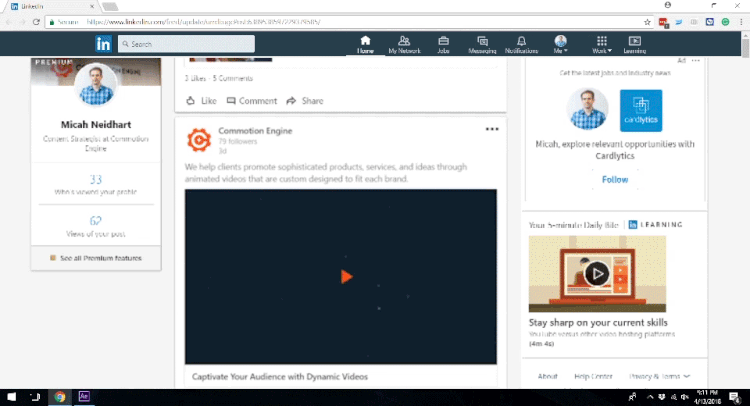
Though there aren’t as many options for video ad types on LinkedIn and the price to run an ad can be a bit more expensive than other platforms, LinkedIn does provide one of the most engaged and relevant audiences if you’re in the B2B world.
Launch your Sponsored Video Content and, most critical of all, test! The price of LinkedIn ads can put a lot of people off, but if one ad with an expensive cost per click (CPC) drives one customer with a high lifetime value, your investment will more than pay off.
Twitter Ads
Though Twitter content is ephemeral, Twitter video ads have a longer permanence than organically posted updates, and because you get to choose the users they’re shown to, you also get the benefit of a more engaged audience seeing them.
As you set up your campaigns, you’ll see plenty of campaign goal options, which drive the structure of your ad. The two that relate directly to video marketing include Promoted Video Views, perfect for spreading brand awareness, and In-Stream Video Views, which can help boost your view count by borrowing equity from bigger, more well-known brands.

Tweets that include video are six times more likely to be retweeted than Tweets with images, making Twitter one of the most ad-engaged audiences around. Whichever ad unit you run with, make sure your content is bright and attention-grabbing.
Native Ads
Don’t know what native ads are? Then you’re probably their prime target! Native ads are ads that appear in-feed online and that don’t disrupt the user experience. A native ad executed perfectly won’t look anything like an ad, increasing the likelihood of users clicking or tapping on it.
Though video ads on social networks like Facebook and LinkedIn are technically native ads, there’s a whole world of possibilities when it comes to launching native ads outside of those platforms. From sponsored content on news and magazine websites, to features on entertainment sites and more, native video ads are a great option for those who want to reach users in a less obvious, more convincing format.
Influencer Outreach
Think influencer outreach will break the bank? While it can be expensive, there are options for brands that can’t afford the glitzy television campaigns that were once associated with celebrity endorsements.
And remember: an “influencer” isn’t necessarily a celebrity in the traditional sense. They can be anyone with a large following on any social media platform, including TikTok, YouTube, Instagram, Twitter, and more. Think comedians, athletes, actors, reality TV stars, singers and musicians, video game reviewers, and more. They have social clout that you can leverage and are highly trusted by a large number of people.
You’re basically looking for someone whose audience is the same as your target audience. Then, you can partner with them at whatever level feels comfortable for your budget (and their integrity). Whether it’s a single Instagram post that mentions your product and a discount code, or a series of branded videos they create on your behalf, there are many opportunities to leverage video into your influencer marketing strategy.
Owned Distribution
Unlike paid distribution, owned video distribution happens at no cost – you own the channels you use to distribute your content, so you have more control over when something publishes, who sees it, and how you promote it.
The main channels for owned distribution include your website, email lists, blog and ecommerce pages, social channels, and more. Any channel you create and control outright is an owned channel. Though you may not be able to pick the exact demographic and audience targeting options with owned channels that you can with paid, you have a lot more control over the general messaging and experience your users have, helping you build stronger relationships.
Let’s take a closer look at how you can incorporate video marketing into your owned channels.
Video Hosting
Before we get too deep into owned video distribution, let’s take a look at video hosting. Your video will live on whatever platform you choose, which could affect where and how you publish it, so you want to be sure to think about what hosting requirements you absolutely need and which features you can live without.
YouTube
YouTube is undoubtedly the king of all video hosting platforms. YouTube isn’t just the biggest platform, but also the second-largest search engine behind Google and one of the most recognized social platforms around.
If you’re looking for a reliable video host, there are tons of pros to using YouTube: it’s free, it’s great for SEO, it’s got a large audience, and it’s one of the most user-friendly services. But it’s also not the best if you’re looking for very robust analytical data or if you want complete freedom to customize. Compare how important these customization and data tracking efforts are to you and your business and think about whether you’re willing to trade some of them in for the convenience and reach that YouTube offers.

Vimeo
Vimeo is probably the second-largest video hosting platform and definitely holds its own when compared to YouTube. Sure, it’s not nearly as big – it gets 280 million views per month compared to YouTube’s 1 billion, but companies and creatives alike love it for its reliability and higher video quality standards.

While you do have to pay for its premium plans, which offer greater storage capacities, Vimeo’s lead generation and reporting features make it perfect for those looking for easier website embedding, information capturing, and long-term reporting. If you create video on a regular basis, but you don’t expect your largest audience to come from the hosting platform itself, Vimeo could be the best option for you.
Third-Party Hosting
If you’re looking to pay for something more robust than what YouTube or Vimeo offers, a third-party hosting solution may be your best bet. These options are great when you want detailed reporting, actionable insights, and a robust platform that’ll integrate fully with all your marketing software.
Take a look at options like SproutVideo, Wistia, VidYard, or Brightcove. These are often more expensive, but offer a range of management and customer lifecycle tools, which can help offset the price.
Owned Distribution
Your job doesn’t end when your video is done! Find out a little more about some of the most common owned distribution channels you can use to promote your video.
Website
Publishing your video on your website is essential if you want to spread your brand messaging further and turn more visitors into paying customers. Start with your homepage and then see what other pages you can enhance with a video.

Homepage
Would video help enhance your homepage ? This should be one of your first stops when it comes to promoting your video. Whether you’re sharing a message directly from the founder of your company or a more general 30-second brand video, any content that helps spread brand awareness or inform visitors about your brand should live directly on your homepage.
Other Website Pages
Depending on the type of video you create, your video could also live across multiple other pages on your website. For instance, if you make a product video highlighting product features, that could be posted on your product shop pages. If you create an educational industry video, that could live on your blog or category pages. If you create a recruiting video, that should definitely go on your About Us and/or company hiring pages. Be creative and think about where on your website your video would make the most sense.
Using video in your email campaigns is also a must if you want to get the most out of your video efforts. Including them in your emails can lead to an increase in click-through rate of up to 50 percent, and including just the word “Video” in your subject line can increase open rates by more than 19 percent. That’s huge! And it’s an opportunity you don’t want to miss if you’ve already got a video ready to go.
Think about where in your email sequences it would make sense to add video. If you created an educational video, definitely use this content in a newsletter campaign. If you created a promotional video about a new product release or sale, include that video in an email announcement. Think about your sales sequences, your transactional sequences, and more. Every piece of digital communication offers a great chance to engage the viewer, so make this your second owned distribution pit stop.

If you need more help figuring out what types of videos are best for email, check out this article, which breaks down exactly which types of videos you should focus on.
Blog
How much attention do you pay to content marketing? If you’ve got an insightful blog that you update regularly and that drives a steady amount of traffic, then your video definitely belongs here!
And the best part is that most blogs are multifaceted – there are very few limits to the content you can post! Interviews, customer testimonials, product reviews, brand videos, expert Q&As – the choice is yours. As long as your video provides value to the user, it’s likely perfect as a piece of featured content on your blog.
Social Media
Promoting your video content organically on your social media pages seems pretty obvious, but has the potential to drive some huge results.
- Video posted on social can increase brand awareness by as much as 32 percent with even just three seconds viewed.
- Forty-six percent of users take action after viewing a social video.
- Social videos are shared 1200 percent more than text and images combined.
That means if you’re not sharing video on your socials, you need to start! Besides taking your video and posting it in its entirety on networks like Facebook or LinkedIn, you can also take shorter edits and create engaging micro-segments out of them, short 8- to 15-second clips that will capture the attention of your audience and deliver value in the form of education or entertainment.

Ecommerce Pages
If you created a video that’s related directly to a product you sell, using it on your product ecommerce pages feels like a no brainer. Whether you feature the video boldly, or embed it alongside other product photos, making this content available can be a huge convincing factor.
When visitors land on your product pages, they come with the intent to purchase. Since they’re deep in the consideration stage, you want to do everything you can to nurture that mindset and encourage check-out. Optimizing your page with product videos that show off product styles, wearability, fit, functions, or benefits can be just what the user needs to see to go through with that sale.
Earned Distribution
Earned distribution is the most unpredictable and volatile of all your distribution methods. That’s because you have relatively little control over what gets posted and when. Of course, with the right outreach strategy, earned distribution can be one of your biggest drivers of organic traffic, boosting your brand awareness and retention efforts.
Earned distribution is essentially content distribution done by other people or brands. Though you may work with other companies or influencers to share your posts, earning this distribution means you’re not paying them to do so. Earned distribution also means you’re not sharing your content on any of your owned properties.
Social media is a great place to get these earned distribution links. You might share videos you create on your owned company pages, but the minute someone shares a post of yours on their business or personal page, that’s earned distribution. The more of this distribution you get, the further your reach.
Let’s take a look at a couple of our favorite types of earned distribution.
Reviews
Customer review videos are videos created by users of your product or service. They’re real review videos that aren’t sponsored in any way, and typically show both the positive and any negative aspects of your product, providing an honest point of view. Because it isn’t coming from you as a brand directly, it’s a less biased perspective and increases the credibility of the person speaking.

These review videos can be created organically with no input from you as the brand whatsoever. If you work for a big or well-known company, chances are high someone will naturally make a video reviewing their experience purchasing or using your product or service. But if you work for a small or relatively new company, you’ll have to do a little bit of leg work to get these videos created.
Keep in mind, you aren’t paying for these reviews (if you were, they’d classify as paid distribution). You can, however, urge your users to create this content for themselves. You can contact people directly and ask them to review your product, find influencers who review products like yours already, or create content yourself asking for these reviews, like social posts, blog posts, a website contest, and more.
Public Relations
What happens when you’ve created an amazing video, but it isn’t picking up the steam you hoped it would? That’s when more traditional methods of public relations (PR) can help get your video off the ground.
Promoting your video with PR starts with baking the right value proposition into your video. With an enticing hook, you can make your video attract the right audience and spark interest. Then, create the right pitch for press sites, writers, and outlets; when you do your outreach, give them a real trendy and relevant reason to want to share your video. Create a large list of noteworthy contacts, including writers, influencers, industry leaders, and more, and let them know why they should take an interest in your video and what it can impart on their audience.
Websites and publications are constantly looking for visual media that will enhance their stories, so show these sources how your video can add value to their content. The added benefits video provides when it comes to engagement metrics and SEO should be enough, but if your content is timely and relevant, traditional PR methods can go a long way.
Are You Ready?
When it comes to distributing your video, owned, earned, and paid channels are all crucial to your success. Balancing them based on your video goals, where your audience primarily hangs out, and how many resources you can put behind promotion will all affect your video’s performance. But having the right strategy in place means you’ll set yourself up for greater wins.
Don’t let your video advertising strategy be the reason your video doesn’t perform up to par. Give us a call if you’re struggling with your video’s distribution and we’ll give you our top pointers directly over the phone, and show you how fresh, new video content can transform the way your audience engages with you.

